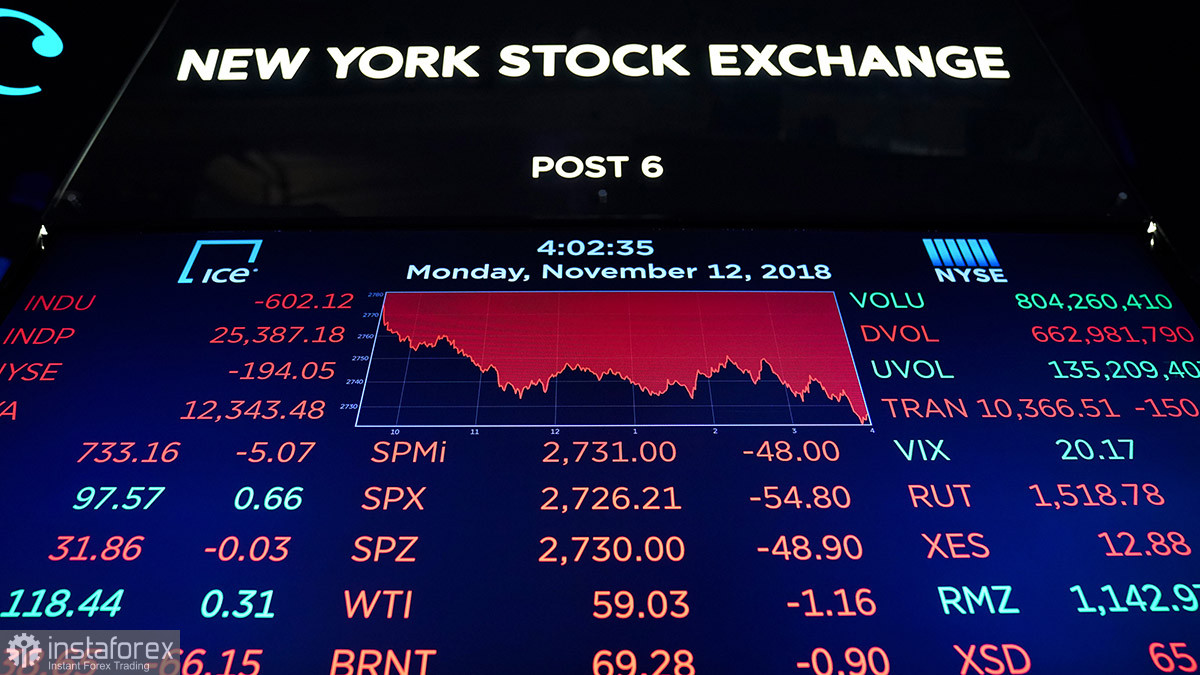
The key indices of the US stock market – Dow Jones, NASDAQ, and S&P 500 – ended Thursday with a slight drop but still managed to update their local highs during the day. Thus, rather, it is necessary to talk about the growth of stock indices and not about their fall. No significant reports were published in the States on Thursday. Investors could only pay attention to the report on unemployment benefits applications, which amounted to 262 thousand, which coincided with the forecast. There were no new reasons for investors to buy American stocks. But they have been doing this for several weeks in a row, discouraging us because everything should be the other way around.
Let's briefly recall: if the Fed rate rises, this is a favorable factor for the dollar and a negative one for the stock market. What are we seeing now? If we delete the latest inflation report, there will remain an aggressive tightening of the Fed's monetary policy, with the US dollar falling and the US stock market rising. That is, everything is exactly the opposite. Of course, such illogical periods and segments happen sometimes, but ours has been delayed too much. We can assume that all future rate hikes were worked out by the markets long ago, so now they have no reason for new dollar purchases and stock sales. But yesterday, the chairman of the San Francisco Fed, Neil Kashkari, said that the Fed is still very far from defeating inflation, and the key rate should be raised to 3.9% by the end of the year and to 4.4% in 2023. That is, if earlier our assumption about the need to raise the rate to 4% looked somewhat unrealistic, now the members of the monetary committee themselves are slowly beginning to voice thoughts even more "hawkish" than our assumption. Inflation has decreased by the end of July, but it is unlikely that the rate of 2.5% will be enough for it to return to 2%. Consequently, the rate will have to be raised further, and the markets could not take into account the fact that in mid-August, some members of the Fed will already be talking about 4.4% as the target level of the key rate.
Therefore, we stand by our opinion: the "bearish" trend in the stock market has not been completed, and its current growth looks more like a buyers' trap. Prices may be rising artificially, but at some point, the big players will rush to get rid of stocks and indices, which will cause a new, fundamentally justified collapse. Investment conditions in the US will worsen in any case while the Fed raises the rate; how, under such conditions, can the market for a new "bullish" trend? So now we are just seeing a deep correction.





















